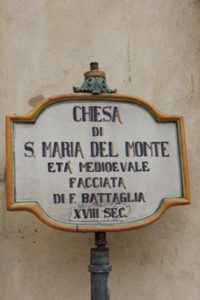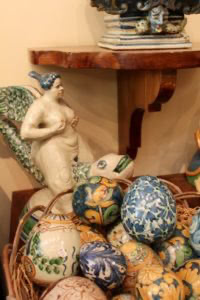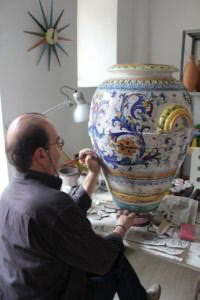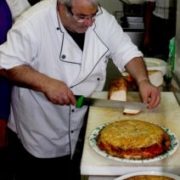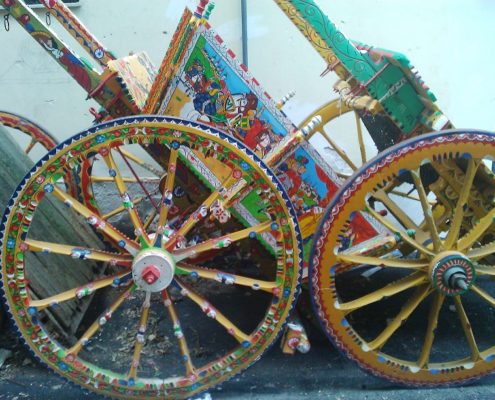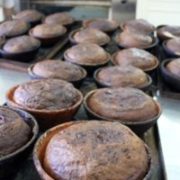How travelling and experiencing different cultures has influenced my cooking – Dominique Rizzo’s Interview by A Taste of Harmony
You’ve been running food and wine tours since 2012 now, how has travelling and exploring the cuisines of Sicily, Spain, Greece and Norfolk Island and others, influenced your cooking and recipes?
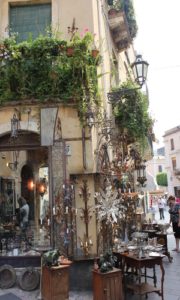
Everyone would have to agree they are inspired, even just a little by the gastronomic delights they experience when travelling. For me it’s the same, I come back from my tours completely energised and even more inspired to cook more, use more fresh seasonal produce, shop at local markets explore new places, and most importantly what I bring back with me from my travels is the emphasis on keeping things simple and to let the star ingredient shine through.

The simplicity of the street food in Sicily, chickpea panelle arancini, Pane con le milza,sfincioni and croquettes, date back thousands of years, with traditions that have been handed down through generations and techniques and customs passed on through the many different cultures that has stepped upon Sicily’s soil. Romans, the Spanish, Swabians, Greeks, Normans, Arabs and so on have all left their mark on the food here. I used to think that my food was sometimes too simple and then whenever I come back from one of my food tours, I am comfortably confident in what I do and the recipes I come up with. I give them my own twist and flavour but fundamentally I always reflect back to the food I ate on my tours, their way of life and the importance of culture, tradition and community and it always grounds me.

My cooking has become a melting pot of them all, combining the flavours, ingredients and methods of cookery. In all honesty, I feel that these cuisines are some of the healthiest ways of cooking. Their cuisine styles are simple and I believe it is with the addition of the exotic spices, fresh herbs, fresh and dried fruits and nuts, that simple 3 or 4 ingredient dishes can sing louder with flavour, and have us drooling more than some of the more lavishly garnished, intricate ingredients and long, complicated dishes we find.

More locally, Norfolk Island has been an amazing food experience and left a definite mark, not only on my cooking, but more so on my philosophy for living and importance in strength of community. Norfolk has this amazing, friendly, wonderful sense of freedom. Its waters and air are pristine, it has a very interesting history and unique flora and fauna. Apart from some pre-packaged items and a couple of fresh ingredients, everything is grown, harvested and produced locally. I absolutely love that. Their traditions and history are really embraced with great pride and respect from the locals, their precious island and its unique lifestyle is embraced by everyone. It is an amazing place to visit for either a quiet relaxed getaway enjoying some amazing wine and food experiences or a wild adventure of fishing, sailing, boating, rock climbing, bush walking and attending the many events and festivals which they have on the island.
Your tours involve small groups of 14-16 people, have you found through sharing and learning about food together while on tour you also learn a lot about each other?

Yes absolutely, it’s part of the main reason I love running my food tours. I have the greatest honour of meeting so many amazing, passionate and interesting people and as much as I have learnt so much about them, the stories of their lives and how they interact with others, their quirks and why they might do the things they do. I have learnt so much about myself, which I have been so grateful for.
I have always believed that sharing a meal, engaging in a cooking lesson together, tasting wine and enjoying conversation, any means of gathering together around food brings out the best and sometimes the worst in people, but usually the best.
The biggest lesson I have learnt in my life that has been reinforced through running my food tours is never judge or make judgment on others as you never know what is really going on for someone behind closed doors. Until you have sat with them, engaged, connected, communicated and listened to their stories, it’s hard to imagine some of the painful events that people have experienced, which in turn has made them who they are.
I really like to just sit back, ask questions and listen to get to know people and what they like, dislike and I really enjoy asking people about their life. I find the more I know about someone, the more I am able to better understand who they are, their culture, beliefs, and in return they can better understand me and I believe this is the basis to peace and harmony between us as humans.
If you had to pick one experience from your tours that has been a highlight for you so far, what would it be?
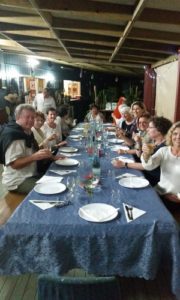
That’s a very difficult question!
It wasn’t necessarily an experience, more like a moment where we were all in the most beautiful moment of laughter, joy and sharing a stunning dinner on the Island of Salina. It was a series of little events, positive outcomes for some of my clients and some wonderful transformations they had simply by being able to just sit back, relax and be guided around on my tour. I design and host my tours because I know what it’s like to organise travel either before you go or while you are on the go and quite frankly it can be exhausting.
Sometimes you come back not rested or relaxed but slightly stressed and underwhelmed at all the places you missed seeing, the restaurants you didn’t get to, the distance you didn’t travel and sights you didn’t see because you were travelling on your own or organising it yourself. It’s a big job. I saw my clients faces lighten up, their smiles grow more frequent, they were glowing, their personalities opened up and on that occasion, we just laughed and laughed.
For me it was one of the most special times I have had on tour.
Why do you think it’s important to celebrate cultural diversity in our workplaces, kitchens and in general?
I personally, am becoming so despondent at the way we as humans are treating each other. It’s frightening and really sad to see and hear the way some people talk to each other, tease, taunt, troll and hurt others. People don’t listen, they refuse to open up and understand. If everyone could just stop and listen, and accept that everyone is different, that we all have different cultures, backgrounds, beliefs, understandings, ways we do things and ways we think., then I believe we would have way less hate and way more harmony.
I really feel that it is beyond important, almost a necessity to celebrate cultural diversity, not only celebrate but we need to be constantly educated and reminded of its importance. Without celebrating cultural diversity, we wouldn’t have half the interesting aspects of our country that now exist. We would not be open to new ideas and ways of doing things.
The more we can celebrate and be open to cultural diversity, the more we will have stronger communities looking out for each other and not just it being mine, yours and theirs. I sincerely hope that in my lifetime we will be celebrating not just one day through A Taste of Harmony and bringing this awareness to cultural diversity on this day, but that it will just be the norm. Acceptance, understanding and freedom for everyone to live their lives embracing their tradition, culture and to embrace everybody else’s’ with the same respect would be my greatest joy.
Why should workplaces get involved in A Taste of Harmony?
To get involved with Taste of Harmony is to say to your employees, we embrace and accept everyone equally. We see the importance of cultural differences as a benefit to our business and we support and respect it. We welcome different, we welcome diverse and we are open and willing to engage in bridging the gaps and to open the lines of communication. It can only be a good positive outcome for businesses to engage everyone together on an even platform – strength in numbers.
Dominique Rizzo is one of Queensland’s leading chefs, author and owner of Putia Pure Food Kitchen. Learn more about Dominique’s Food, Wine & Culture Tours to destinations such as Sicily, Greece, Spain and Norfolk Island here.



